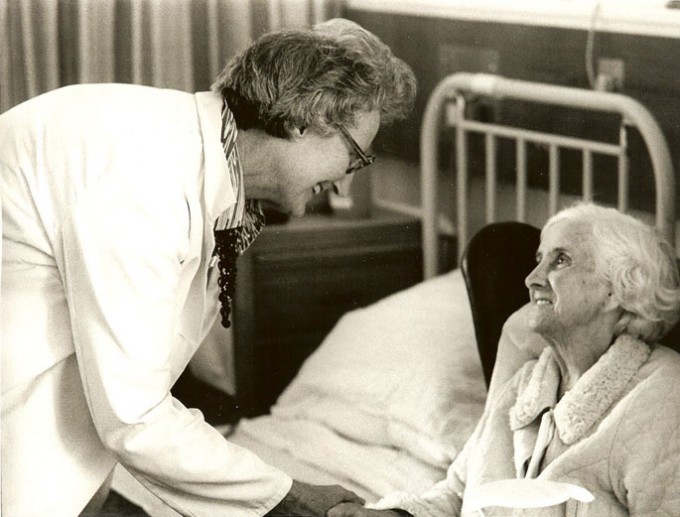Profiles In Nursing
Cicely Saunders, Founder of Modern Hospice Care
Cicely Saunders created Palliative care

Although she was a nurse for only a short time, Cicely Saunders devoted her life to serving patients in their final days. Her work transformed our understanding of palliative care, demonstrating that with proper support, terminal patients can find peace, purpose and even happiness.
Called to Nursing
Born to a wealthy English family, Saunders never needed to work for financial reasons, but felt called to nursing during World War II. She enrolled in the Nightingale School of Nursing at St. Thomas’ Hospital in London, from which she graduated in 1944.
As part of her training, Saunders cared for many dying patients, an experience that led her to conclude that there had to be a better way to treat the dying. In that era, in England and elsewhere, terminal patients were rarely told of their prognosis, although many probably guessed. Pain medication regimens were stingy, so hospital back wards were often filled with dying patients’ screams of pain.
After the war, Saunders continued to support terminal patients as a hospice nurse and medical social worker. One of her patients was a terminally ill Polish refugee named David Tasma. As he languished, Tasma and Saunders shared their dreams of a place where patients’ final days could be easier.
When Tasma died in February 1948, he left Saunders £500 (the equivalent of more than $20,000 today) to help establish such a place. “Let me be a window in your home,” he told her.
From Nurse to Doctor
It would take Saunders 19 years to fulfill that dream. Although she met others who believed in her vision, she found that no one at that time would listen seriously to a nurse. She responded by enrolling in medical school, again at St. Thomas’ Hospital. After earning her medical degree in 1957, she became an expert in the emerging field of palliative care while working at St. Joseph’s Hospice in east London.













